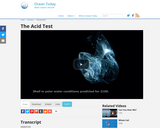
This video discusses the causes and effects of ocean acidification.
- Provider:
- National Oceanic and Atmospheric Administration
- Author:
- Natural Resources Defense Council, NOAA, Smithsonian Institution
- Date Added:
- 06/24/2019

This video discusses the causes and effects of ocean acidification.

Students will use an online calculator to estimate their household's carbon footprint and explore various actions to reduce it.
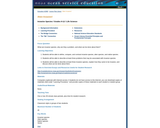
Students will investigate and discuss problems associated with invasive species. They will then conduct research and prepare a written case study on a specific assigned invasive aquatic species, including information about how it was introduced, impacts associated with its occurrence, and possible control measures.

Students investigate factors that limit the spread of invasive species in the United States. They compare the spread and limiting factors of three classes of invasive species - insects, plants, and aquatic invertebrates - through data sets from the National Atlas and readings on invasive species issues. This activity is part of "Investigating Your World With My World GIS," a set of activities designed for use with My World GIS software (which can be downloaded at www.natgeoed/myworldgis) to help students learn key content and practice spatial problem solving.
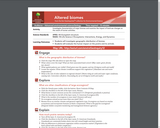
Investigate characteristics of major biomes and examine the impact of land-use changes as the result of human activities.
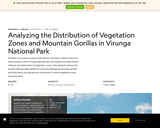
Students use a map to analyze and contrast variations in abiotic factors at three locations within Virunga National Park and explain how these factors influence the distribution of vegetation zones. Then students deduce the location that provides habitat for critically endangered mountain gorillas and think about why gorillas are not present in similar vegetation zones across the park.

Students will explore how human population growth, air pollution, agriculture, mining, water use, and other human activities have impacted the environment and the mark they will leave in the fossil record.
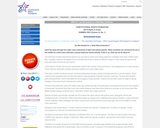
In this lesson, students review past mass extinctions. They will also examine current human impacts on global biodiversity and consider whether there might be another extinction event soon. A set of discussion questions is provided. In an associated activity, students will discuss whether to support or oppose proposed rules to restrict the use of street vehicles, OHVs, and bicycles on public land.

This resource is a part of the Battlefield Earth lesson plan. This resource provides step by step ways for teachers to implement the lesson.
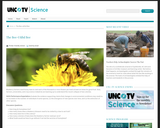
This multimedia resource, part of the NC Science Now series, describes how researcher in Research Triangle Park are working to figure out what is causing the dramatic decline in the population of honey bees and how it is threatening the world's food supply. Components of this resource include a video, a related blog article, and discussion questions. Links to these components are provided on the page under the heading "UNC-TV Media."

In this video, NC Virtual educator, Brandi Thurmond, discusses Air Pollution with the aid of a light board.

In this activity, students will explore NOAA's Coral Reef Watch: Satellite Coral Bleaching Monitoring Datasets page in Google Earth. The referenced "Engage" activity can be found at (http://climateclassroom.org/lesson/engage-hs-3/).

Students will use the stories in episodes one and two of "Years of Living Dangerously" to better understand the long term impacts deforestation and longer wildfire seasons have on the environment.

Students use the example of the Burrowing Owl to illustrate how human activities can control the fate of a species. In addition to exploring the negative impact community development has had on the owl's habitat, students will read about proactive steps people have taken to reverse this destruction.

Students will research and evaluate an environmental issue, considering multiple perspectives and historical precedent. Using the provided list, they will select an issue that is of particular interest to them, research its components, and develop a blog post, podcast, or presentation that aims to educate other students about the issue at hand.

Students will be engaged in learning how human activities can deliberately or inadvertently alter the equilbrium of ecosystems through human behavior and/or the use of technology/biotechnology that impacts environmental quality and carrying capacity. Students will engage in graphing and interpreting data about the bald eagle, beaver and yeast populations. Students will evaluate their own understanding of carrying capacity by using a radar diagram; they will use a summarizing strategy to extend their knowledge and will learn how environmental problems are identified and solved.
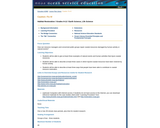
Students will review and discuss the importance of coastal resources, then work collaboratively in conducting research to learn about specific restoration efforts that have taken place to restore damaged resources. Each group will summarize their assigned case study and lead a discussion about resource restoration.
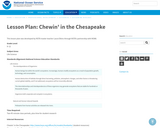
Students will understand how a human-caused stress placed on the environment affects the life in a food web. Students will conduct research to learn about the abiotic and biotic factors in an ecosystem, then create a product to present the findings of their research.
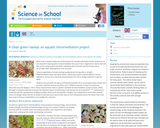
Students are introduced to the topic of bioremediation and collect information about Azolla, such as the morphology of water plants as opposed to land plants, the importance of symbiosis, the nitrogen cycle, the use of Azolla in agriculture, and Azolla’s ability to absorb heavy metals. Students formulate the research questions and hypotheses that they would like to investigate. Possible topics include measuring the gain in biomass depending on growth conditions (e.g. CO2 level, iron level in the water, amount of light), or the effect of Azolla on water quality.

This video provides information about the causes and effects of Earth's changing climate, specifically focusing on wildlife populations and the impact global warming has on habitats.